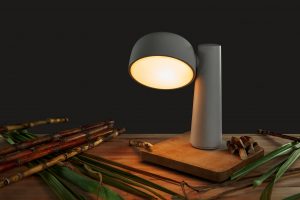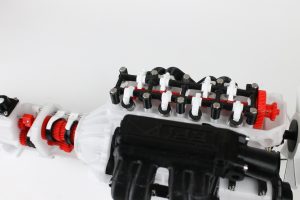HI!
I am Stephan Schürmann, I am inventor, designer, creative engineer, CAD-constructor and a passionately craftsman.
3D printing is what makes my ideas come to life!
During my bachelor thesis I am going to use colorFabb’s new XT-CF20 for making an extraordinary project: 3D print a bicycle frame!
Cool, right ![]() yes. So I want to make this as an open project. Everybody can participate and take part of the design process.
yes. So I want to make this as an open project. Everybody can participate and take part of the design process.
Just leave a comment and tell us your ideas! I will try to implement what’s possible and keep you up-to date with a weekly blog-post on this site.
So, I hope to have a lot of fun with you guys out there,
Cheers!
Stephan





9 Comments
Thanks for Information about Printing.
Hi there Stephan,
First of all great project! really innovative and refreshing approach to designing a (racing) bike.
It’s for this reason that I’m going to give it a try to print my own 😉
But with carbon tubing, gears and brakes.
However I was wondering what kind of groupset you used for this bike? and what kind of bearings/ shaft you use for the crankset? (sizing+type)
Why didn’t you use a gear casette? is it to complicated to get it fitting? and do you tink a casette would fit?
I’m thinking of using an existing handlebar because I’m not able to print it in one piece and due to the forces which are applied on the handlebar I don’t trust multi piecies. Also makes adding brakes and gears a lot easier.
Hopefully you can help me out a little that would save me some time and money.
Thanks,
Jelle
Hi Jelle,
Stehpan is currently enjoying his holidays, but here’s his answer:
Hi Jelle,
This sounds like a cool project; the Carbon tubing should be no problem and the result will look awesome!
The bottom bracket is a 73mm BSA inside a bottom bracket housing. You can use any crank set that fits to your bottom bracket.
If you want to have a geared bike, you’ll need a cassette and a Derailleur. The cassette can be mounted on a regular rear wheel, but a Derailleur mount (Derailleur hanger) needs to be added.
We have made a single speed bike, so there was no need for a Derailleur hanger. If you want a geared bike you’ll need to edit the dropouts with CAD software. Hub gears might be easier in this point because they don’t need the Derailleur hanger.
A front break is easy to mount on the fork, but a rear break also needs some further engineering because the bike frame geometry has no mounts for it yet. Here again, the hub break with an integrated backpedal brake might be the easier solution.
Success, Jelle.
We’re excited to see your progress!
Hi.
I am also building a 3d printed bicycle this summer and am very interested to learn what materials you used in your bicycle. Was the frame the Colorfabb XT-CF20? What material did you use for connector pieces. Any Helpful tips for me moving forward?
Thanks,
Patrick
Hey Patrick,
I am planning to publish my recent work in the next week! So far, I can say that I’ve designed the connection parts and printed them on an Ultimaker Original with a 0.8 Nozzle using XT-CF20.
You can download the CAD files via GrabCAD and Thingiverse then.
Links will follow here, stay tuned!
Cheers,
Stephan
Hi Stefan,
cool project 😛
have you already compared the XT CF20 material with the normal carbon to see if the properties compare with other materials already used for bicycle frames:
Density (or specific gravity)
is a measure of how light or heavy the material per unit volume.
Stiffness (or elastic modulus)
can in theory affect the ride comfort and power transmission efficiency. In practice, because even a very flexible frame is much more stiff than the tires and saddle, ride comfort is in the end more a factor of saddle choice, frame geometry, tire choice, and bicycle fit. Lateral stiffness is far more difficult to achieve because of the narrow profile of a frame, and too much flexibility can affect power transmission, primarily through tire scrub on the road due to rear triangle distortion, brakes rubbing on the rims and the chain rubbing on gear mechanisms. In extreme cases gears can change themselves when the rider applies high torque out of the saddle.
Yield strength
determines how much force is needed to permanently deform the material (for crash-worthiness).
Elongation determines how much deformity the material allows before cracking (for crash-worthiness).
Fatigue limit and Endurance limit
determines the durability of the frame when subjected to cyclical stress from pedaling or ride bumps.
Because Tube engineering and frame geometry can overcome much of the perceived shortcomings of some negative properties of materials.
So are you just trying to make a normal frame or are you really engineering to the benifits of the XT CF20 material?
Hello Rik 😀
yes, there are some similarities between XT-CF20 and normal carbon fiber plastic like the anisotropic behavior. We found that the maximum strength in layer direction is about the double as against layer direction.
Because we can use only very short fibers in our filament we can not reach the strength of regular carbon fiber reinforced plastic, therefore we have a greater freedom of form with the 3d printing technology.
The first prototype will show how comfortable the bike will ride; but mostly it will be a proof of concept. It will also be a Material testing laboratory on 2 wheels!
Hi Stephan,
Great project. What kind of bike is it going to be? Are you also doing the concept design?
Maybe interesting for you is the Berlin Bicycle Week later this month. Just check it.
Regards, Marcel
Hi Marcel!
With this project I want to push the limits of FDM 3D printing by printing a fully functional bicycle frame.
3D printing gives us freedom in design that we can use to print lots of fancy trinkets, but I prefer to make high performance, material efficient and customizable stuff.
Design for 3D printing is the new age of product design. In this blog I will share my first concepts very soon, keep it tracking!
That exhibition in Berlin looks really good, let’s see what next weekend will bring.
Thanks,
Stephan